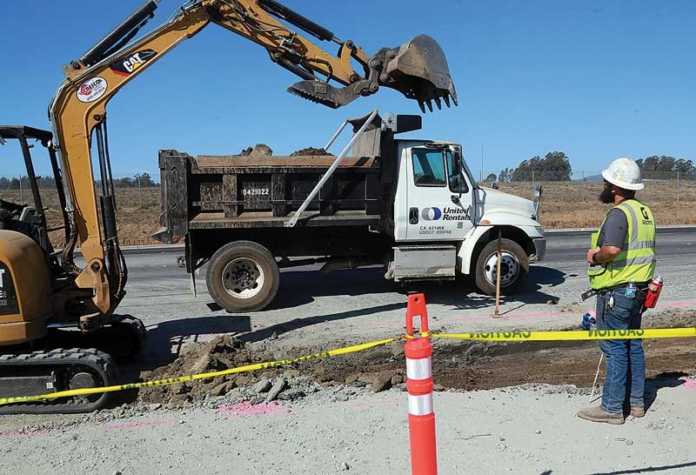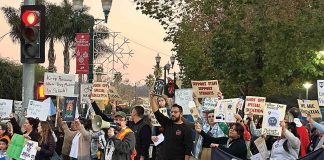To properly understand the following summaries, it is important to first understand the difference between general obligation bonds and revenue bonds, which covers propositions 1– 4.
While revenue bonds can be paid back through existing streams of revenue such as toll bridges or stadiums, general obligation bonds are often paid by new sources, such as sales taxes and property tax levies.
In general, those opposing bond measures are wary of increasing tax burdens on already cash-strapped Californians.
Proposition 1
If approved, Proposition 1 would authorize the state to issue $4 billion in general obligation bonds.
Of this, $1 billion would go toward loans to help veterans purchase homes and farms, and $1.5 billion for housing programs for low-income residents.
The proposition would also direct $300 million for farmworker housing program, and another $300 million for manufactured and mobile homes.
It would also direct $450 million for housing projects near transit centers.
Proposition 2
Proposition 2 would essentially allow Proposition 63 to go into effect.
Also called the Mental Health Services Act, Prop. 63 was approved on Nov. 2, 2004. It levied an additional 1 percent tax on incomes of $1 million or greater to fund health service programs.
The legislation did not go into effect, however, because of pending legislation about whether the revenue could be spent on homelessness prevention.
Proposition 2 is a revenue bond that would authorize the state to issue $2 billion in revenue bonds that would fund housing for homeless people in need of mental health services.
Proposition 3
Proposition 3 would authorize $8.877 billion in general obligation bonds, which would fund a host of water infrastructure projects throughout the state.
Analysts say the bond would generate about $8.4 billion in interest over a 40-year period, meaning the bond would cost the state a total of $17.3 billion.
Proposition 4
Proposition 4 would authorize $1.5 billion in general obligation bonds to provide for the Children’s Hospital Bond Act Fund.
Voters approved general obligation bonds for that fund in 2004 and again in 2008.
This bond would provide $270 million to five University of California hospitals, and $150 million to public and private hospitals that provide pediatric services.
Proposition 5
Proposition 5 would allow homeowners 55 and older or severely disabled to transfer their property tax assessment to their new home, and to benefit from the differences in prices between the homes.
The homeowners could also make the transfer despite the new home’s location and the number of moves.
Supporters say the law would help seniors looking to downsize their homes from being hit with a massive tax penalty.
Opponents include the California Teacher’s Association, which says that the law will mean a revenue loss of about $2 billion annually, which would have gone to schools, fire, police and health care. Opponents also say it would increase housing costs, all while giving a tax break to wealthy Californians.
Proposition 6
Proposition 6 would do two things.
First, it would repeal the Road Repair and Accountability Act of 2017, a 12-cent-per-gallon gas tax created to fund road infrastructure projects throughout the state.
The tax was estimated to raise $5.2 billion per year, or $52.4 billion between 2017 and 2027.
Prop. 6 would also change the way future tax increases are enacted.
Currently, increases require a two-thirds vote by the California Senate and Assembly, and the governor’s signature. The new law would create the additional step of gaining voter approval.
Proponents say the tax adds an additional burden to already cash-strapped commuters. They also say that the revenue will not help relieve the state’s congested roads, and that the state should instead use some of its $16 billion surplus to fix the roads.
Opponents say that passage of the law would mean a loss of an estimated $4.9 billion annually, which has already been dedicated to much-needed repairs.
Proposition 7
Proposition 7 would repeal Proposition 12, a law approved in 1949 that established Daylight Savings Time in California. That would allow the California State legislature to establish permanent, year-round daylight savings time with a two-thirds vote. This would also require congressional approval.
Proposition 8
Also called the “Fair Pricing for Dialysis Act,” Proposition 8 would place a 155 percent cap on the revenues related to patient care.
Anything above that would have to be reimbursed to the insurance companies. Clinics that exceed the cap would also face fines.
Supporters say the law would help patients pay for a lifesaving service. They also say that dialysis companies charge an average of $150,000 to patients who have private insurance, which is a 350 percent markup from the cost of providing care.
Opponents say the law would limit what insurance companies reimburse clinics for dialysis, forcing the clinics to limit services or close.
Proposition 10
This law would repeal the 1995 Costa-Hawkins Rental Housing Act, which limits rent control to buildings built before 1995. It also prohibits municipalities from stopping landlords from increasing rents to match market price.
If passed, the law would allow jurisdictions to enact rent control measures on any type of rental property.
Supporters include teachers and nurses’ unions, the Democratic Party and the ACLU.
They say that Prop. 10 would help stabilize an out-of-control housing market. Supporters say the Costa-Hawkins act gives landlords incentives to force out tenants in favor of those who can pay higher rents. Currently, there is no limit to what a landlord can charge after a tenant vacancy.
Opponents say that Proposition 10 would affect everyone, including homeowners renting out a single room in their homes to make ends meet. It would also make it more difficult for landlords to raise rents to make up for cost of living increases.
Opponents also say that the law would force potential landlords to take their properties off the market, and instead offer it on such vacation rental services as Air B&B.
Proposition 11
Proposition 11 would require emergency medical personnel such as EMTs and paramedics to remain on call during their breaks, and provides compensation to do so. This law would also require the emergency workers to receive additional compensation if they miss a break.
There was no formal opposition filed to Proposition 11.
Proposition 12
Proposition 12 would ban the sale of meat and eggs from calves raised for veal, breeding pigs, and egg-laying hens confined in areas below a specific number of square feet.
Specifically, by 2020 it would ban whole veal meat from a calf that was confined in an area with less than 43 square feet of floor space per calf. It would also require at least 24 square feet for pigs, and at least one square feet for each chicken.
Opponents say the initiative would force egg and meat producers to move their operations out of the state. They also claim that the rules will reverse current laws that mandate more space for chickens.
•••
The Watsonville City Council unanimously opposed Proposition 6 Tuesday, citing the dire need for funds to repair the city’s crumbling road infrastructure.
Proposition 6, on the November ballot, would repeal the Road Repair and Accountability Act of 2017, also known as Senate Bill 1, a 12-cent-per-gallon gas tax created to fund road infrastructure projects throughout the state.
The tax is estimated to raise $5.2 billion per year, or $52.4 billion between 2017 and 2027.
Prop. 6 would also change the way future tax increases are enacted.
Currently, increases require a two-thirds vote by the California Senate and Assembly, and the governor’s signature. If passed, the new law would create the additional step of gaining voter approval.
According to Principal Engineer Murray Fontes, Watsonville stands to gain about $8.8 million over the next 10 years from SB 1. The funds are already being used for projects in the city, such as currently on Airport Boulevard, where crews are reconstructing the road, adding new sidewalks, pedestrian crossings and more.
“SB 1 funding will allow the city to move ahead with numerous projects over the next five years,” Fontes said.
Santa Cruz County receives about $25 million a year from SB 1, according to Regional Transportation Commission Deputy Director Luis Mendez.
“Losing SB 1 would be devastating for the transportation picture, not just statewide, but locally as well,” Mendez said. “Can we afford to lose SB 1? I personally think the answer is definitely not.”
Proponents say the tax adds an additional burden to already cash-strapped commuters. According to Reform California, which is leading the “Yes on Prop. 6” campaign, SB 1 costs a family of four about $780 more per year in taxes.
They also say that the revenue will not help relieve the state’s congested roads, and that the state should instead use some of its $16 billion surplus to fix the roads.
“Sacramento politicians really crossed the line with these massive car and gas tax hikes and we intend to give taxpayers the chance to reverse that decision with this initiative,” said Carl DeMaio, chairman of Reform California.













